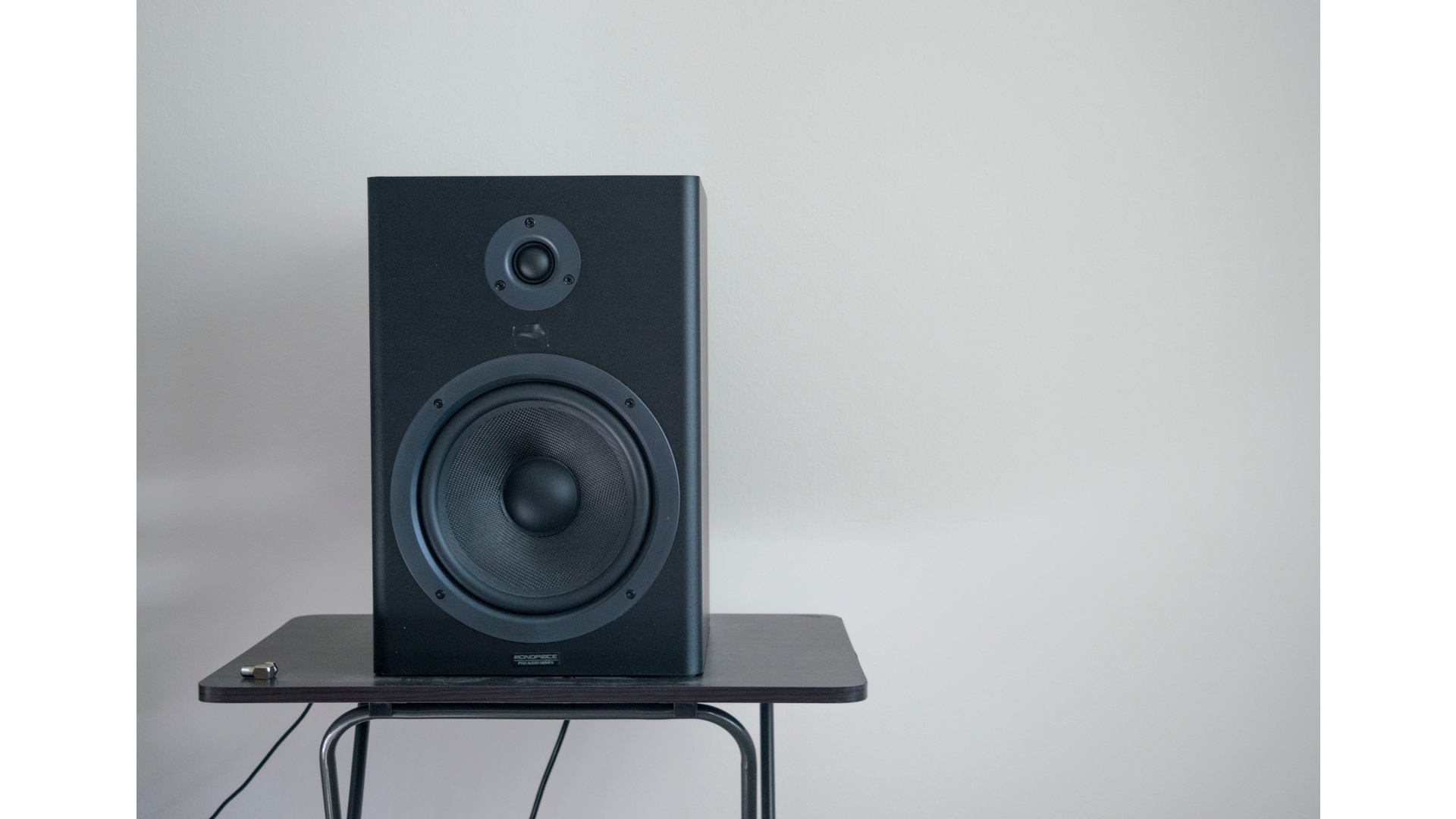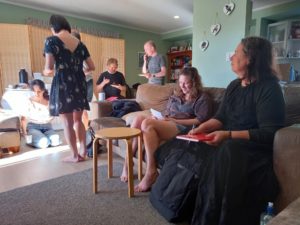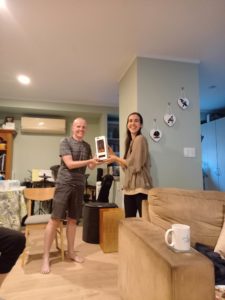I Help people sing and speak expressively and powerfully no matter the level of experience :)
HI, I'M JORGELINA
EXPAND YOUR VOCAL RANGE TODAY!
Grab today my 3 SINGING SECRETS to expand your vocal range for FREE!
GRAB IT NOW

Understanding the basics of vocal acoustics
Understanding the basics of vocal acoustics for singers can seem a bit overwhelming. However, if you understand how it works you will have much more control over the way you sound.
A couple of weeks ago, we had our first nerd session of the year! Throughout the year we have various group events with the adult students such as karaoke nights, jazz nights, jams, etc. This time the topic was learning about vocal acoustics. We met to learn about how vocal acoustics affect our singing. Not an easy topic, but we were surrounded by many sweet treats that made the session easier!

At the end of the session, we had a quiz to see who understood better the topic!
Here’s the champion receiving his prize:

So today I wanted to tell you a little bit about the basics of vocal acoustics for singers and how they help your voice.
The basics of vocal acoustics for singers
You are probably familiar at this point with the basic way we produce voice: our vocal cords open and close many times per second resisting the air passing through. This causes a vibration, and the resulting vibrating air is our raw voice before it is filtered. Depending on how many times per second your vocal cords vibrate, you will have a different pitch. For example, in an A 440, your vocal cords vibrate 440 times per second! They work hard!

Harmonics
Now, that primary sound that you hear as the pitch is not all that it is to the sound wave. That sound wave is actually composed of partials that we know as harmonics. Harmonics are then multiples of the fundamental frequency.
What you have to know here at a basic level is that we hear the fundamental frequency as pitch and that we hear the harmonics of it as the colour of our voice. And this is where you have a lot of room to play around with your voice!
Resonators
We have a lot of resonators in us! However, our primary resonators are the mouth and the throat, so that’s where we spend lots of our singing training time.
Now, your primary resonators interact with the sound wave and its harmonics will modify your sound.
Very simply put, big spaces will boost low frequencies and small spaces will boost higher frequencies.
So, if you are a singing student, you have been working on that already although possibly you weren’t told of that. But when you start playing around with different vowels, you are modifying those acoustic spaces and therefore your voice sounds different. The way the sound wave interacts with your acoustic spaces will not only determine the darkness or brightness of your voice, but it will also determine the specific vowels that we hear.
That is why, for example, an “ee” sound sounds brighter than an “oo” sound. In the “oo” your resonators are shaped in a way that you are boosting the lower frequencies of the sound wave in both of your primary resonators. Therefore the sound is perceived as darker. In the “ee”, your tongue goes forward modifying the acoustic space in your mouth. Your mouth space is now smaller and therefore higher frequencies will be boosted there.
In other words, the way you position your tongue will constantly move and change the acoustic spaces framed by your throat and your mouth.
How does this affect my singing?
Understanding vocal acoustics and how modifying the shape of your resonators impacts it will give you the power of getting the sound you are looking for. That’s why opera singers and contemporary singers sound differently! If you observe how different their vocal tract moves when singing, you will understand how much of an impact vocal acoustics have over your sound.
But it is not all about how the sound wave parts are boosted. Depending on how you use your resonance your vocal cords will be impacted as well, and this will again modify your sound in other ways. For example, certain types of singing such as classical, use resonance in a way that a back pressure is produced in the vocal cords, which leads to more healthy power.
But also, the way you use vocal resonance will have an impact on your vocal health. I know, vocal health doesn’t sound like the most exciting thing in the world, however, having strong vocal health is what allows you to get better at singing as you go instead of wearing your voice off. As singers, we need to take care of our voice as we only have one!
How to get started with vocal acoustics
The best way to apply vocal acoustics to your voice is by having a voice teacher that understands the topic! You can have lessons with me from all over the world 🙂 However, if that’s not a possibility for you, start tweaking your vocal tract structures until you find a sound that feels healthy. Generally speaking, you will want to look for a flexible instrument. Observe closely how you use your vocal tract for singing: do you spread the lips wide? Tense your jaw? Close your mouth too much? Bring your head up when singing? Generally, you will want to start working on those issues, which are common to most beginner singers. A good place to start is by just rounding your vowels a bit more. For example, instead of singing a wide, bright “Ah” sound with lips spread wide, try singing more of an “Uh” sound, which will require you to round your lips a bit more. Do this exercise a few times and notice the difference in the way other muscles react to support your voice. You will probably find that when you sing a wide AH sound, your neck muscles have to work much harder than when you sing a UH sound.
Those are the absolute basics of vocal acoustics! In a hugely simplified way.
If you want to learn more about vocal acoustics, I recommend the book Practical Vocal Acoustics by Kenneth Bozeman. It is one of the best resources I have found about the topic.
If you are interested in becoming a healthy, amazing singer you have to come to say hi to our vocal studio in Auckland (Unsworth Heights, North Shore area)!
We offer:
- Singing lessons for super young kids (4-7-year-olds). Bring your super young kid to have fun while learning powerful music skills that they will thank you for later on!
- Singing lessons for kids, teens, and adults – contemporary singing program.
- Vocal coaching for adults (all levels) and intermediate/advanced kids and teens.
We also offer a complementary group class for adults every Tuesday, which is offered at a discounted price to private students. To be part of the group class you have to be taking private voice lessons either with us or with other teachers or have had in the past.
I help people to develop their voice and singing from a holistic approach. I teach vocal lessons in person in Auckland, NZ, and online. Also stay tuned for my new online singing programs!❤️
My greatest passion has always been the voice, music and energy arts.
My personal and artistic journey has led me to understand that the voice and the body are fully connected, and that includes not only the physical body but also the mental, emotional and spiritual body.
Through holistic vocal training you not only learn to become a great singer while taking care of your voice, but you also improve your mental and physical wellbeing❤️
AUCKLAND CONTEMPORARY SINGING SCHOOL - COPYRIGHT 2024 ©
leave a comment